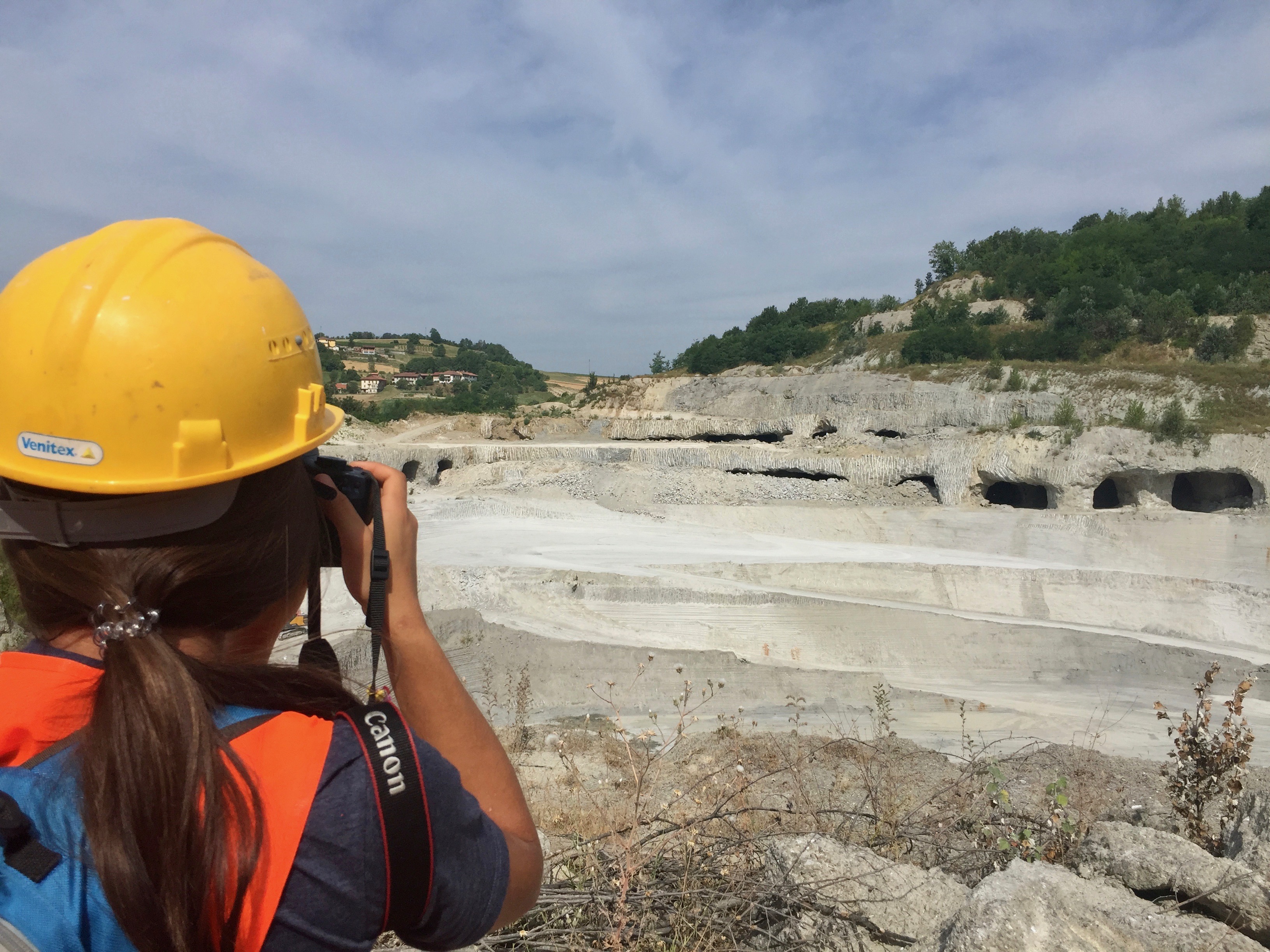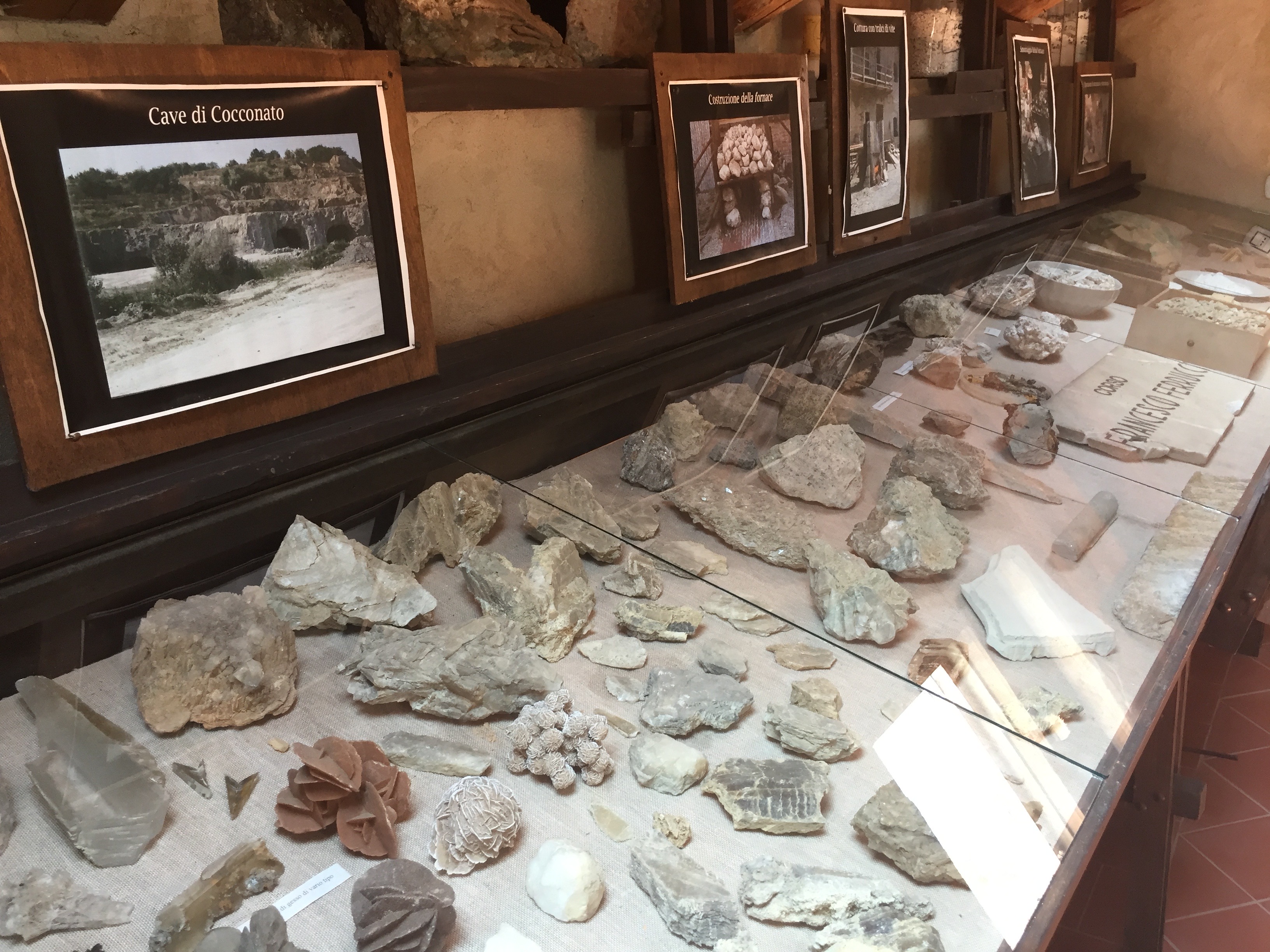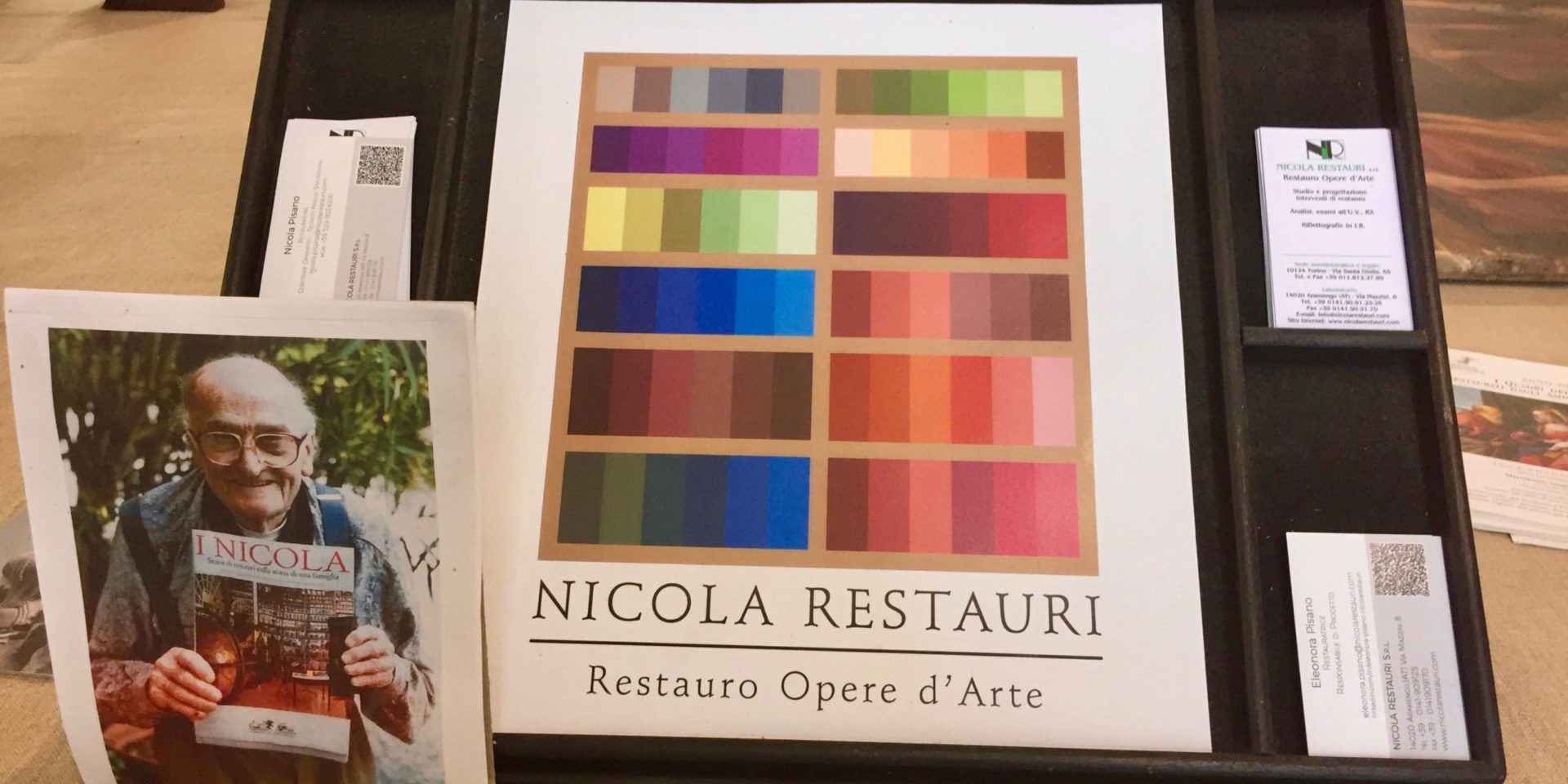ONE-MA3 – Day XXIII: Gypsum, Gypsum, Everywhere!

By Sophia Mittman ’22
Over the course of the entire trip, we’ve heard all about gypsum. Gypsum this, gypsum that. When I first heard the word during the information sessions for ONE-MA^3, I was confused by the strange word that I had never heard before, and I assumed that it was some crazy scientific material that would take a while to understand. But, I was pleasantly surprised by its simplicity. We got our first big exposure to applications of gypsum when we visited La Venaria Reale (a royal palace) in Turin. In this case, the gypsum was used to create the stucco sculptures that ornately decorated the massive rooms and hallways that we wandered through. At that point, I understood that gypsum was basically plaster of Paris. But how one could get from the original form of gypsum to the actual white powdery stuff that you can buy at craft stores was beyond me. Today though, we got to take a field trip to the nearby town of Cocconato and saw first-hand how that process takes place, starting from the ground up…literally.

Sophia Fang ‘22 taking a photo from the upper rim of the gypsum quarry
In this small town among hills near Aramengo is a giant gypsum quarry, and after we dressed ourselves with bright, neon orange construction vests and helmets, we had the opportunity to explore the depths of the quarry ourselves. Everything was blindingly white in the sunlight: the powder-covered ground, the big boulders on the side of the tractor paths, and the entire gaping hole in the ground. Well, it was definitely more than just a big hole in the ground, spanning multiple football fields across its width, depth, and length. We started by walking around the rim of the quarry, marveling at the sheer expanse of gypsum all around us while the sounds of giant drills and clanking could be heard in the distance from a portion of the quarry higher up on the hill. Then, we ventured down to the bottom floor of the quarry, stopping for brief respites from the sun in the tunnels that had been carved out of the hills of gypsum.

Gypsum crystals imbedded into the quarry walls
During these stops, we were able to take a closer look at the gypsum stone in its natural form. From previous descriptions of gypsum being a stone, I had imagined that gypsum looked like a normal rock or something like that. But, it was fascinating to see for ourselves that gypsum is a crystal that forms into chevron-like patterns. On a smaller level, it is formed from thin sheets of transparent, brittle crystal, very similar to mica, which also forms into sheets but takes on a darker color than gypsum. When crushed, these transparent crystals turn into the white powder that covered the ground everywhere—a clue that led on that this crushed-up crystal would indeed eventually become plaster of Paris. As we stood on the lowest level of the quarry, staring up at the tunnels and walls of pure gypsum that towed all around us, we were surprised to learn that the workers at this quarry intend to dig twenty meters father down to dig up even more gypsum before expanding their excavation in a horizontal direction.

Exploring the many forms of gypsum stone at the mini-museum in the Nicola home
After seeing where gypsum actually comes from, we returned to Aramengo and proceeded to try our hand in the next step of processing gypsum. We had brought three large hunks of gypsum from the quarry and took a hammer to each while taking turns until all that was left were small pebbles of gypsum, ranging in size from sandy granules to grapes. These were then placed into terracotta pots and put into Marco Nicola’s furnace to be fired overnight. Ideally, this would result in a dehydrated gypsum, and after being crushed into a powder, it would be ready to be mixed with water to form plaster, perfect for making stuccoes, fixing walls, or using as a surface to paint on. After spending most of the day learning about the geological science behind gypsum and its production, we dove into gastronomical and physical culture by making our own delicious pizzas and dancing late into the night. Within our group of MIT students and Professor Masic, we were all able to participate in traditional dances from around the world! For example, we learned popular dances from Jamaica, Africa, England, and even a fancy-footwork Balkan line-dance from Admir. Without a doubt, it was a night that we will all remember as a one filled with amazing food and charismatic company, having a blast together under the stars that sparkled over the Italian countryside all around us.

Making our own pizzas the Italian way! (Left: Carene Umubyeyi ’22, Right: Jade Arbuckle ‘22)
Share on Bluesky



